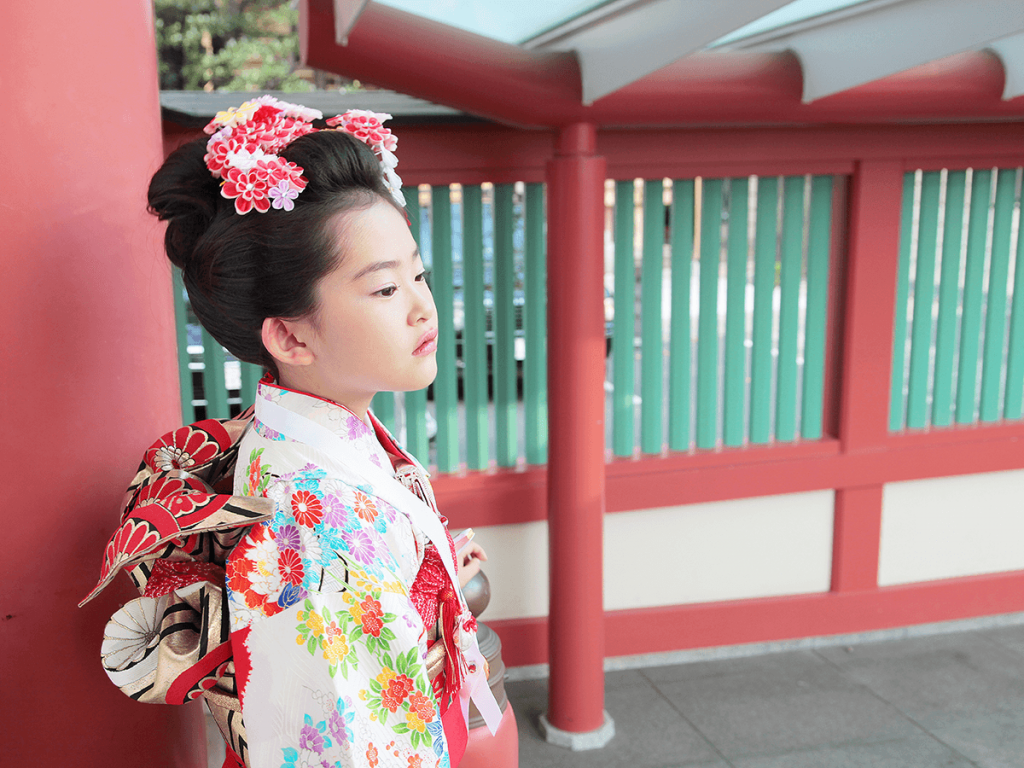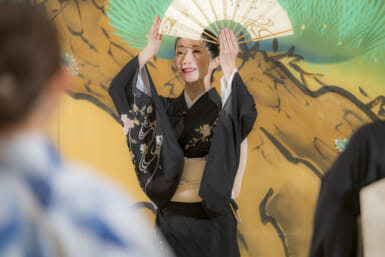When it was already too late to pull out of this shichi-go-san thing gracefully, my wife said: “I hope she will make it.”
“What do you mean?” I asked. “She is three years old, so there is the very real possibility she might behave like a three-year-old. I’m sure she won’t be the first one in history.”
“That’s not what I’m afraid of. I hope she won’t faint.”
“Why would she faint?”
“Those kimono can be wound pretty tightly.” My wife is trying to see the bright side: “She’s aspiring to be an old-fashioned, European-style princess. Now she can experience our version of the old-fashioned, European-style corset.”
It’s true that Hana has a thing for princesses, just like anybody else in her peer group. We live in close vicinity of the famous love hotel Meguro Emperor, which looks like a shiny Disney castle from afar, or like a somewhat grungy Disney castle from up close. Whenever we walk by, which is at least twice a day, Hana will proclaim: “Princess castle!” And of course, she wants to be the castle princess. I’m okay with her shooting for princess. I think it’s a quite ambitious goal, and a pretty demanding job. I have no idea why the princess phase gets such a bad rap in modern child-rearing. Still, I would rather have my daughter be the princess of some other castle. Any other castle.
Back to shichi-go-san, the Japanese celebration of children of certain ages and certain genders, among them three-year-old girls. I enthusiastically voted yes when the question came up whether we should let Hana participate. There was talk of nice hair and nice clothes, there was talk of a short, non-scary ceremony at the local shrine and multiple irresistible photo ops before and after. There was no talk of my precious baby princess fainting.
There were other things I did not know. In the shrine’s waiting room, we were presented with printed instructions in Japanese and English: “How to worship.” I wasn’t aware that I had to come forward and worship. “Maybe I will be the one to faint,” I thought. As a boy I have been known to faint in churches. One shouldn’t read too much into it – I also fainted easily in mundane and secular places; it was simply a matter of low blood pressure. But when it happens in church, people are prone to over-interpretation.
Basic Shinto worshipping is not complicated, and it actually wasn’t my first rodeo. Unfortunately, I err under pressure. The first time I worshipped under instructions from a local friend, I spit the water for the symbolic inner cleansing right back into the basin with the clean water, instead of the drain next to it. That, however, wasn’t my biggest mistake. My biggest mistake was to even try. As much as I am all for respecting other people’s religious beliefs, I am all against mimicking other people’s religious rituals just to blend in. So, these days, whenever there’s a family trip to a shrine or temple, I take a step back and admire the view, while I let the actual worshippers do the worshipping.
In the end, my daughter did not misbehave, I did not spit anything anywhere it didn’t belong, and nobody fainted. The only moment of slight embarrassment came when the priest chanted our complete address, in front of everybody. It was for a more accurate blessing of the children that were being blessed that day, I suppose. I could hear everybody thinking: “Oh, she acts all high and mighty with her complicated kimono and frilly headdress, but her parents can’t afford more than one of the shabbier mansions in the neighborhood.” Or, maybe, nobody thought that at all.
My wife and I left the shrine relieved. Hana, still breathing effortlessly, left the shrine happy about the Shinto goody bag she received. I said to her mother: “The only thing I selfishly regret is that nothing funny happened for me to write about.”
“What kind of funny thing did you expect to happen at shichi-go-san?”
“I don’t know. Like somebody fainting?”
Image: Shutterstock (signed model release on file)









